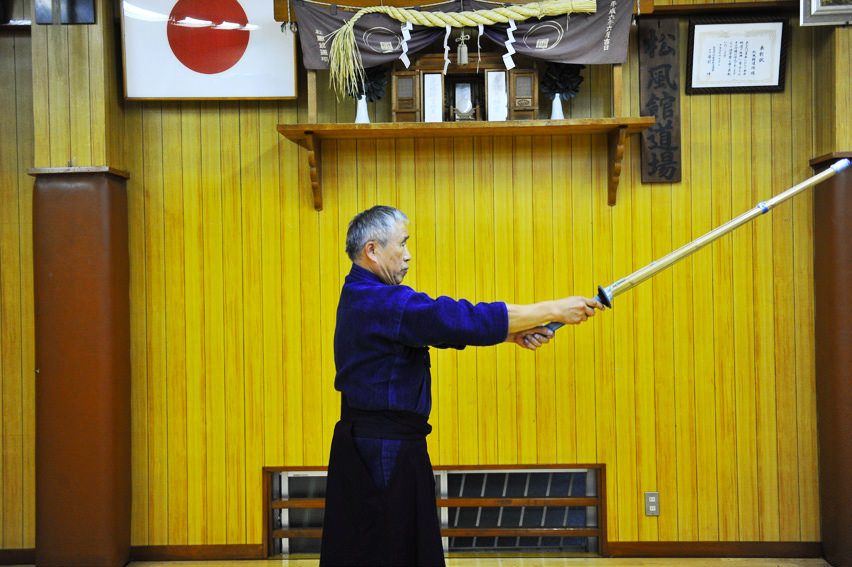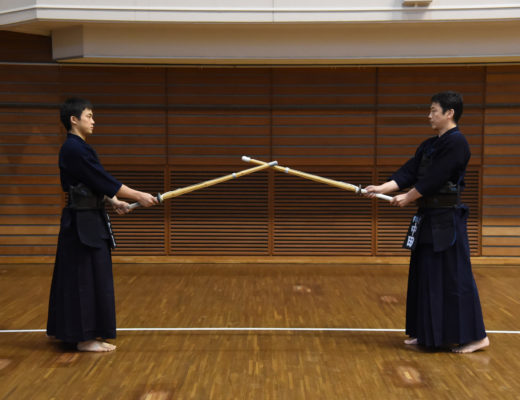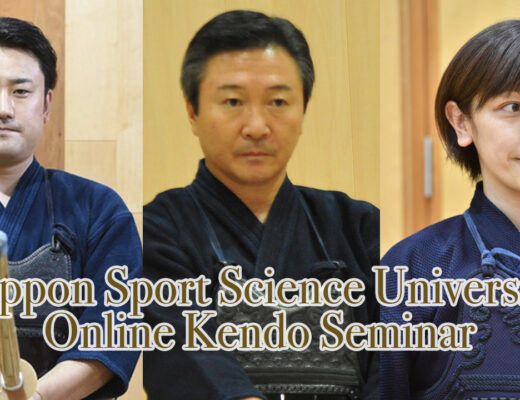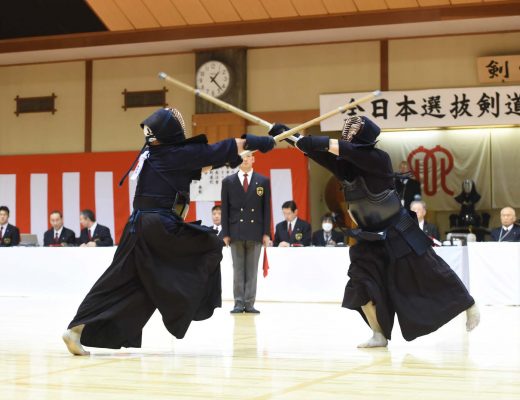Relax the thumbs and index fingers
Always be ready to handle your Shinai with the correct grip
Profile
Iwatate Saburo, 8th dan Hanshi
Born in 1939 in Chiba Prefecture. After graduating from Chiba Prefecture Narita High School, he got a job at Chiba Prefecture Police. After retiring from the Tokuren, Iwatate sensei served as a Kanto District Police School Instructor and Chiba Prefectural Police Kendo head teacher. Starting in 1978, Iwatate began teaching at the Shofukan Dojo and a number of swordsmen from Japan as well as overseas have gathered to ask for the guidance of Iwatate Saburo.
Currently, he is director of Shofukan Dojo, Shobi Gakuen University Kendo head teacher, the All-Japan Kendo Federation councilor, All Japan Kendo Federation vice-president, and the All Japan Senior-Kenyukai chairman.
Relax your upper body with your shoulder blades in mind
Take Kamae through a single vertical axis in the middle of the body
In Kendo, they say “don’t strike with the hands, strike with your legs”. So there is emphasis placed upon the lower body. The left leg is important in particular, and the upper body shouldn’t be neglected. The upper and lower body influence and rely upon each other.
For the upper body, it is important to keep our shoulder blades in mind and to take Kamae while opening up our chest. If our waist is bent or our chest slouching, we will look up to our opponent in Kamae. With such a posture, abdominal breathing cannot be performed and breathing comes from the chest. Chest breathing does not build up power in the lower abdomen and makes us respond to the opponents’ Seme.
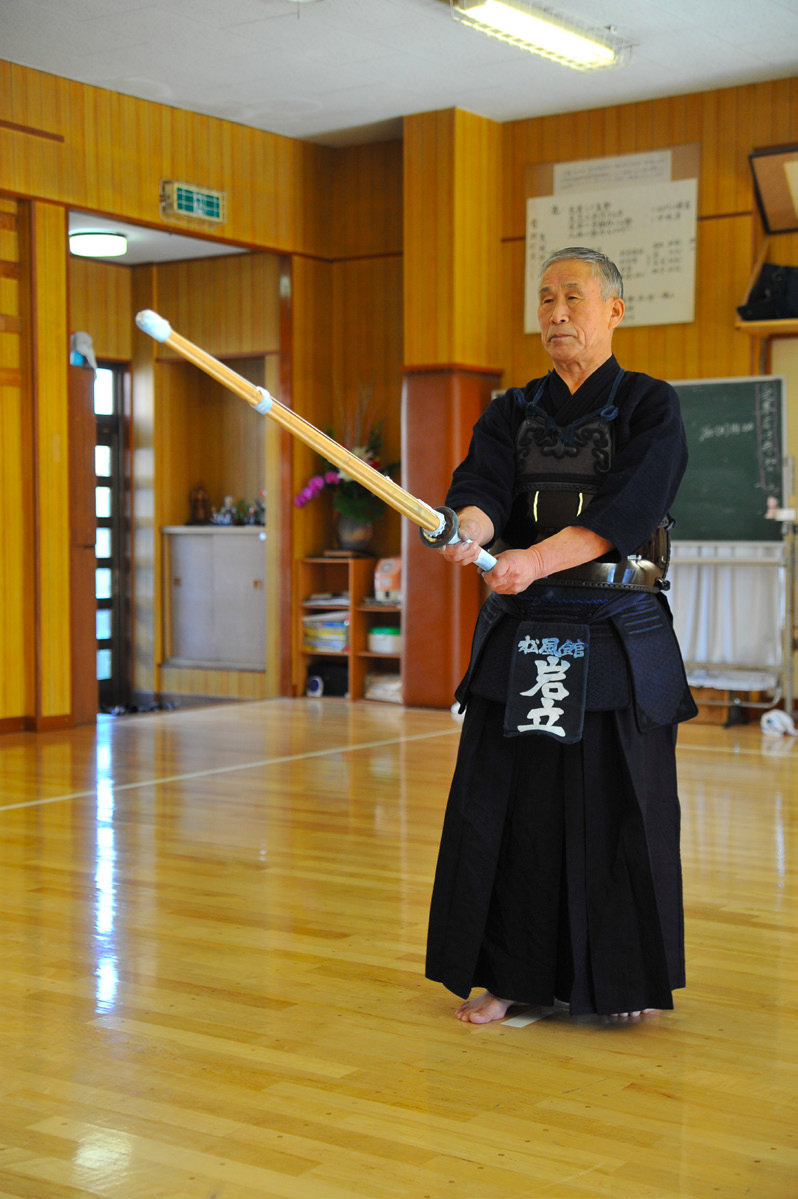
Take Kamae while pulling the shoulder blades back which relaxes the upper body
To relax our shoulders and widen our chest, we must pull our shoulder blades back. We will able to put more strength in our lower body this way, enabling us to focus on abdominal strength. This is how we should take Kamae.
When taking Kamae, imagine a vertical axis going through the middle of your body. Practice this not only in front of the mirror but also against opponents and maintain it to the best of your ability during mutual Seme.
Because Kendo is a duel activity, the will to strike and not be struck is always there. When that happens, our breathing becomes thin and the left hand tends to respond. It is easier said than done but we should incorporate this insight into our Kendo.
The rest of this article is only available for Kendo Jidai International subscribers!

